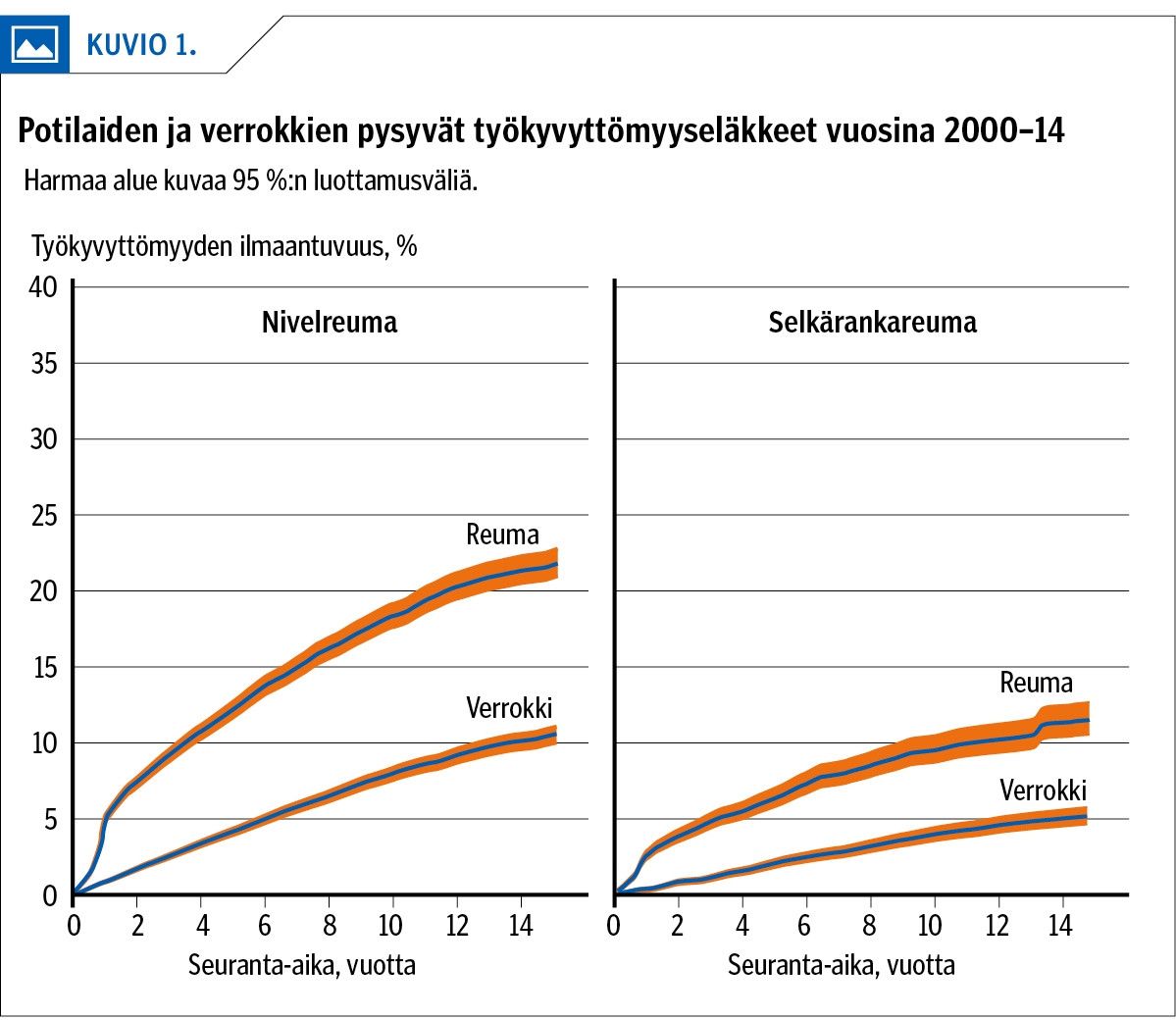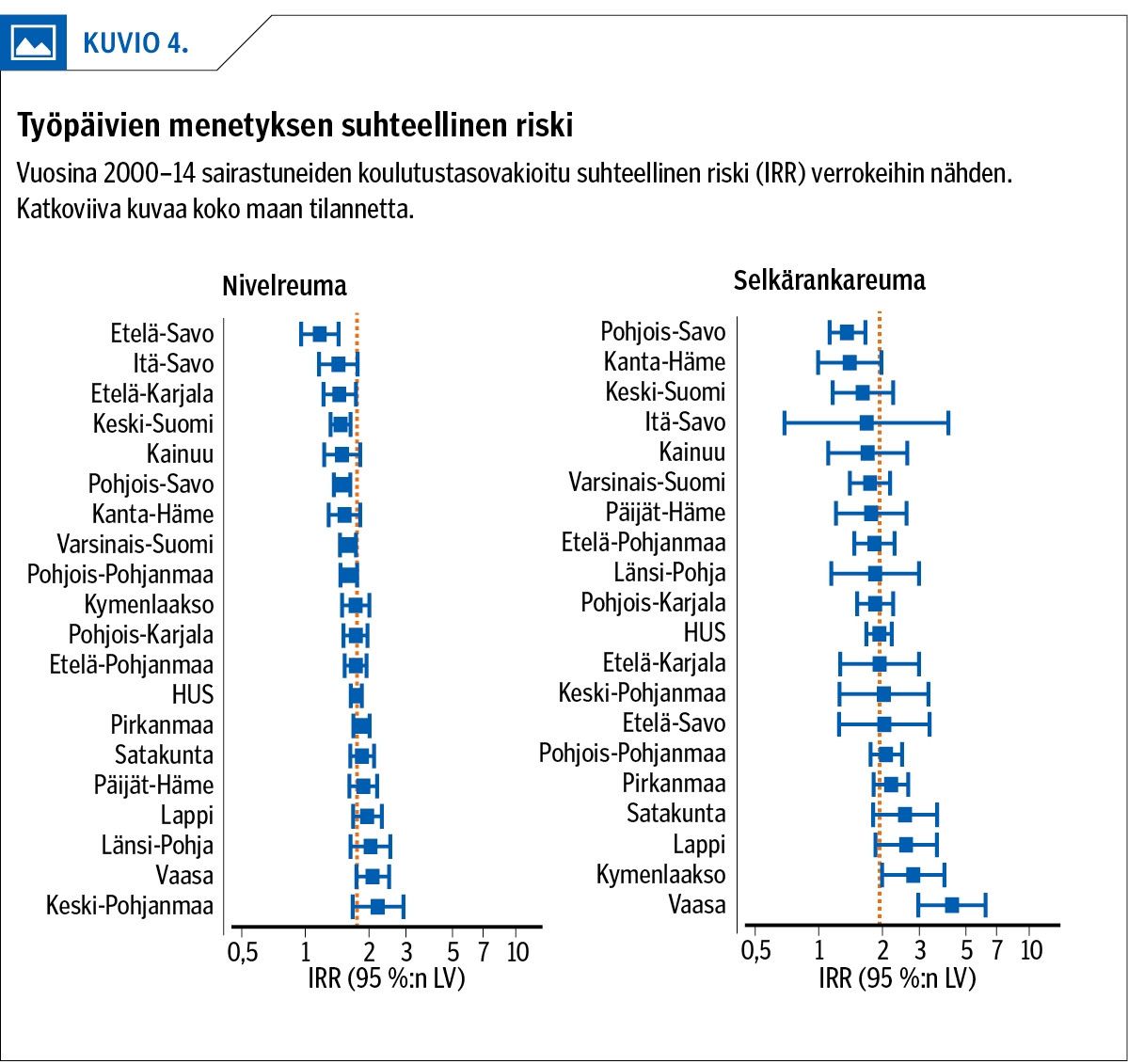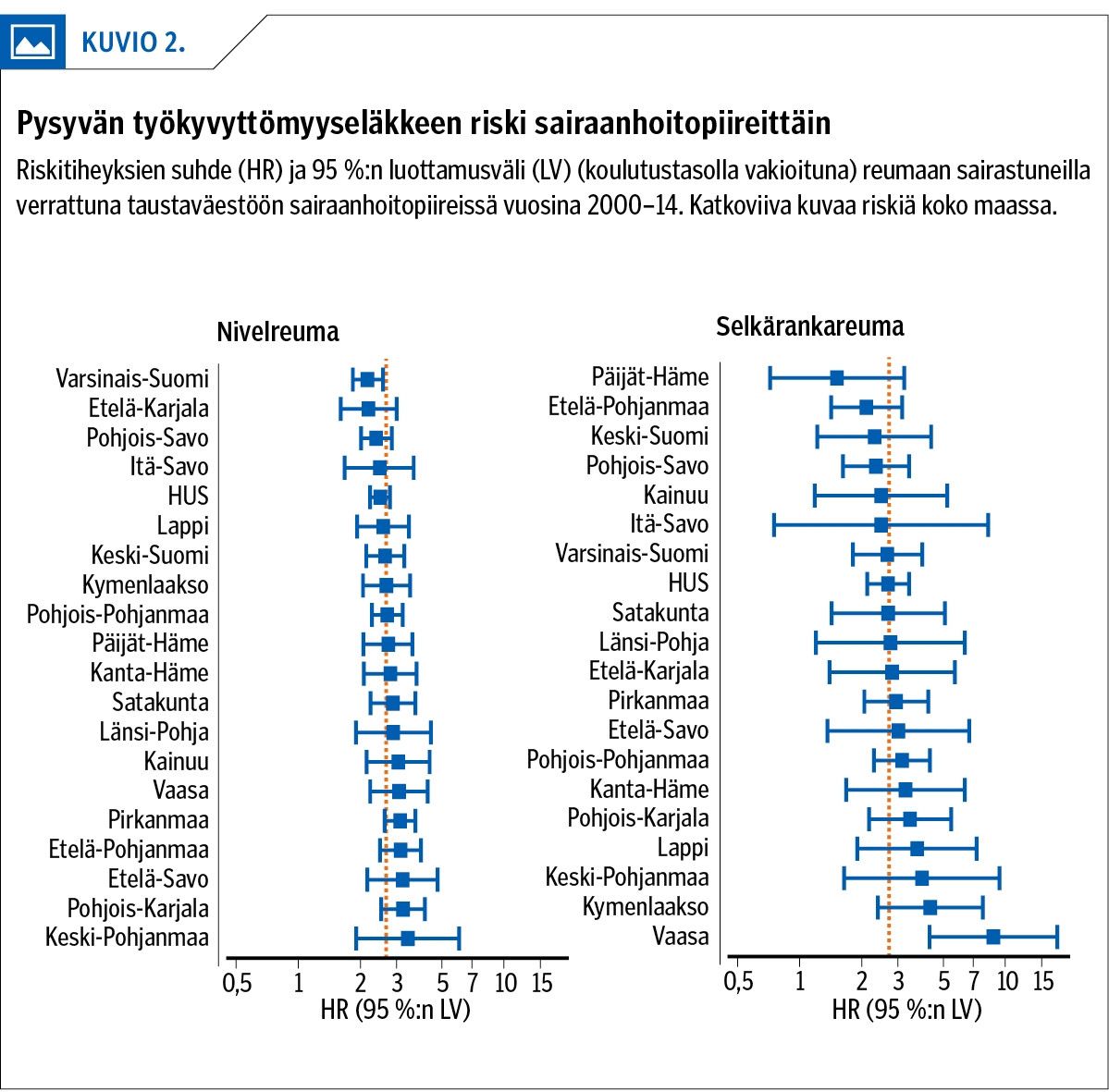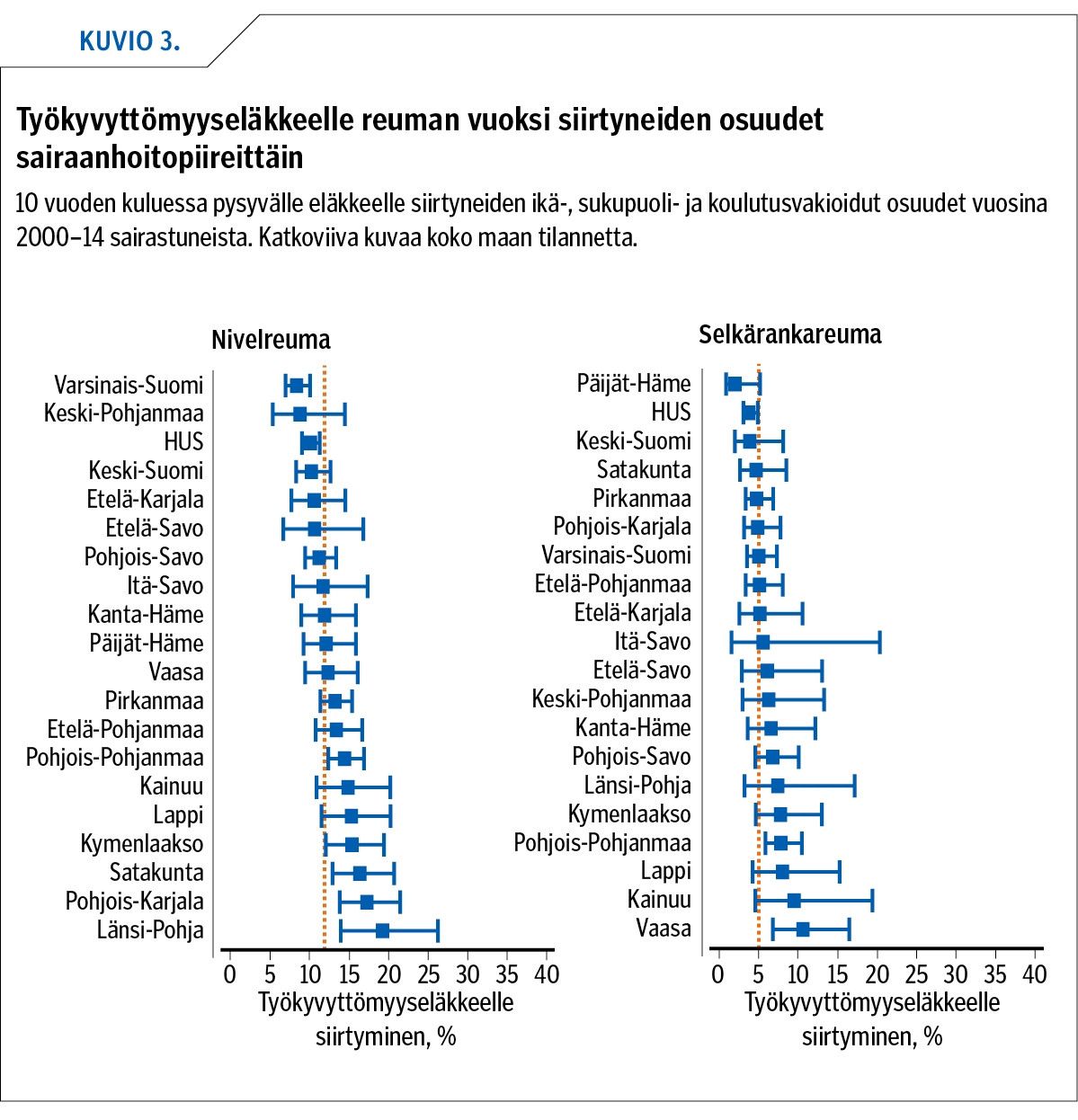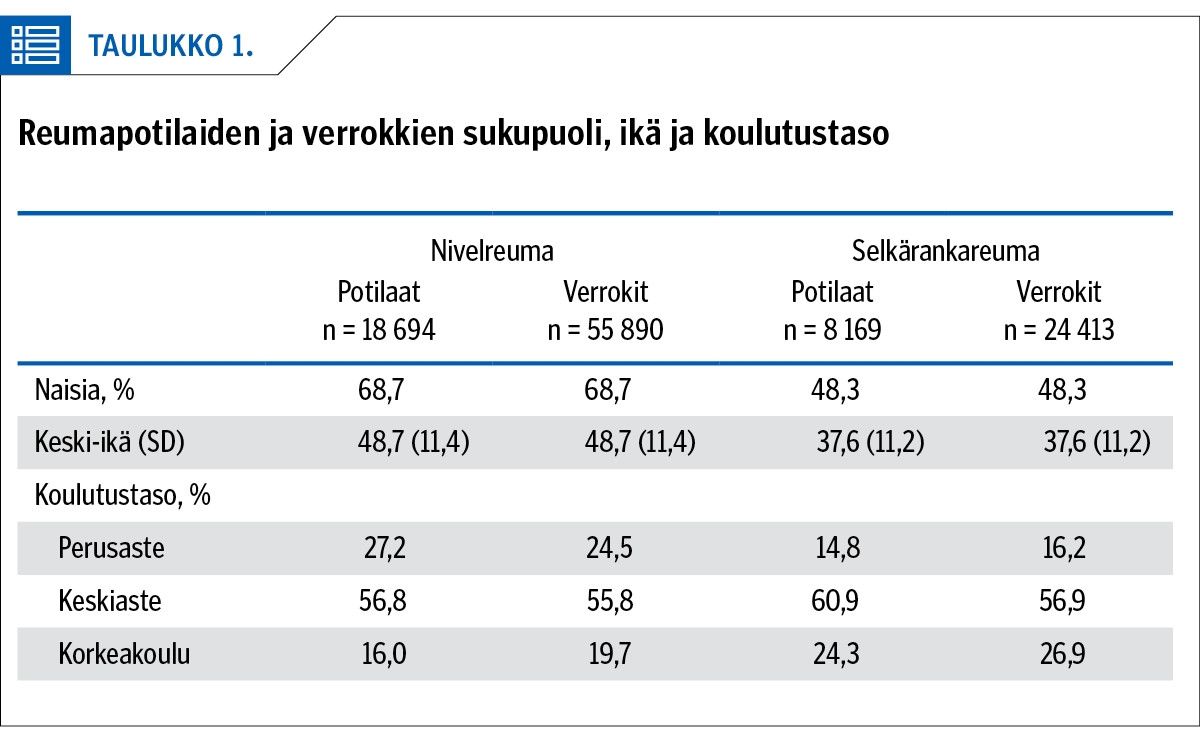Risk for work disability in patients with rheumatoid arthritis and spondyloarthritis varies markedly between health care districts in Finland

Background Rheumatoid arthritis (RA) and spondyloarthritis (SpA) tend to lead to decreased functional capacity and work disability (WD) if not effectively treated.
Patients and methods Individuals aged 18 to 64 years from 20 health care districts who were available to the workforce and developed RA or SpA between 1 January 2000 and 31 December 2014 were collected from the national medication reimbursement register. Three population controls were identified for each patient. All these people were followed up until 31 December 2015, or until retirement because of age, 65 years of age, or death, whichever occurred earlier, and WD pensions and all WD days were recorded.
Results 18 694 patients with RA and 8 169 with SpA were found. Compared to the controls, hazard ratios (HR; adjusted for education level) for all permanent WD pensions in RA varied between districts from 2.17 to 3.40 (p > 0.001 for variance) and in SpA from 1.53 to 8.77 (p > 0.001). The incidence rate ratios (IRR) for all WD days varied from 1.19 to 2.24 in RA and from 1.37 to 4.31 in SpA.
Conclusion Marked regional inequality regarding maintenance of working capacity prevails in individuals with RA and SpA in Finland.
